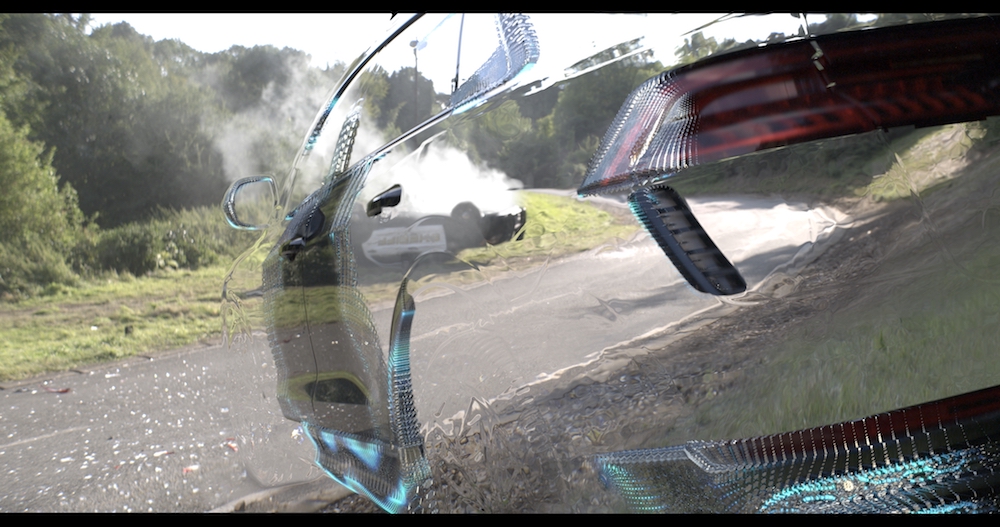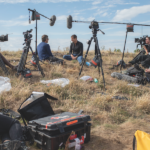
The art of vanishing: The Peripheral
Posted on Mar 8, 2023
We pull back the curtain on the unseen sculptors of The Peripheral and its incredible future-tech visuals
WORDS Robert Shepherd | IMAGES Amazon Studios
Those experienced with the sci-fi genre will be more than familiar with the concept of ‘cloaking’. From Star Trek in the sixties to The Empire Strikes Back – ‘No ship that small has a cloaking device!’ – it’s a long-established trope that gets utilised when characters are trying to hide from each other.
It stands to reason, then, that the process for making things vanish in 2023 requires very little effort. Well – that wasn’t the case on The Peripheral, Amazon’s eight-part adaptation of William Gibson’s visionary novel for Prime Video, produced by Westworld creators Jonathan Nolan and Lisa Joy.
FutureWorks from Mumbai was commissioned to bring the vision of director Vincenzo Natali and the VFX team to life across approximately 260 shots in total. The company was drafted in to create content for the production’s LED volume. Most fundamentally, it also worked to design and bring to life the cloaking technology that features prominently across the series.
Of that workload, Gouri Shankar, VFX supervisor at FutureWorks, explains that creating the cloaking effects for the cars was the most challenging part.
“We had 65 people working on this effect, consisting of modellers, FX artists and the CG teams,” he explains. “There was a concept artist on the other end with the director, and the VFX supervisor who sketched out how the finished sequence should look. With the concept approved, we then got the corresponding assets.”
After receiving the scanned model, Shankar and his team then began to manipulate it to fit their purposes. “For cars, for example, we marked the rubber, metal, glass and plastic elements, so our FX artists could get to work making the various aspects flicker and disappear at different rates,” he states. “The lighting team then ensured that the time of day was accurately reflected in our visuals. The final blend ensured there were no unwanted shadows sticking out in the finished shot.”
Of course, modern technology means scenes like this are far more realistic than they were in Star Trek and the original Star Wars trilogy. However, the director wanted a different aesthetic.
“Turning objects or people invisible is not new to visual effects, but the final look we developed is unique,” explains Shankar. “We brainstormed creative solutions and went through numerous rounds of iterations with the VFX supervisor, settling on that blue heat-shimmer effect. Once we pinned down the direction, we moved on to development and implementation.”
The challenge didn’t end there. Shankar adds that while the cars were cloaked, the team had to balance between actually making the objects invisible, so the audience could suspend their disbelief, while still denoting their presence in subtle ways.
Good examples for that are the collision scenes, where the outline of the car flashes up for a few seconds at the moment of impact, then immediately fades into the background. “Tricking the human eye is always the most intricate part of visual effects, so we wanted to make sure we got it right,” says Shankar.
This story appears in the March 2023 issue of Definition. Read the full article here.












